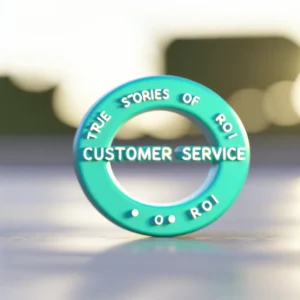In today’s business landscape, crafting a distinct customer experience (CX) strategy is no longer optional; it’s essential. You must confront the critical challenge of meeting customer expectations while building loyalty. This journey demands an intricate understanding of each step a customer takes when interacting with your brand.
Every touchpoint presents a unique opportunity to either delight or disappoint your customers. Hence, a cohesive experience requires careful planning and execution. By addressing these nuanced experiences, you foster deeper connections with your audience, ultimately translating to increased satisfaction and loyalty.
Let’s delve deeper into the complexities of customer experience strategy and examine how integrating your business planning can enhance your brand’s performance. Through this exploration, you will learn actionable steps to elevate your CX strategy and drive your organization toward sustained growth.
Understanding Customer Experience (CX) Strategy
A well-defined CX strategy serves as your blueprint for enhancing customer satisfaction and loyalty. This blueprint connects you with customers, mapping their expectations throughout the customer journey. By focusing on touchpoints, you create a unified experience that not only meets but exceeds their needs.
Your business planning must reflect a clear vision of your desired customer experience. For instance, imagine the Retail Innovate company, which assessed its customer interactions and identified key areas for improvement. After implementing targeted changes, they noted a remarkable 18% increase in customer satisfaction scores.
Gathering customer feedback through surveys and analytics becomes imperative. This data informs necessary adjustments to your CX strategy. For example, a tech startup, TechSolution, enhanced its strategy by integrating qualitative insights, resulting in a 22% increase in customer retention.
Mapping the customer journey is pivotal in shaping your CX strategy. Identify critical moments where you can engage and delight customers. Your understanding of phases—from awareness to post-purchase follow-up—will help anticipate their needs and avoid pitfalls leading to dissatisfaction.
Leadership commitment is essential for advancing your CX strategy. Leaders must champion a customer-centric philosophy, creating a culture that values feedback and proactive service. By prioritizing the customer experience, organizations set the tone for overall success.
The Role of Leadership in Shaping CX Strategies
Leadership is crucial in developing and implementing a robust CX strategy. Business leaders must set a vision that aligns customer journey with organizational goals. Prioritizing customer experience fosters a culture that values customer-centricity across all levels, ultimately driving growth and loyalty.
The executive team at HealthPlus, a fictional health service provider, set clear CX objectives aligned with their business goals. By prioritizing customer experience, they saw a 25% increase in repeat appointments, demonstrating the direct impact of leadership on CX outcomes.
Collaboration Across Departments
A successful CX strategy necessitates collaboration among marketing, sales, and support teams. Leaders must break departmental silos, establishing cross-functional teams. For instance, the Beverage Co. created a task force that shared insights across departments, improving customer engagement metrics by 15% within six months.
Commitment to Continuous Improvement
Continuous improvement is vital. Leaders at ServicePro encouraged teams to experiment and learn from failures, enhancing their CX strategy responsively. This iterative process, emphasizing agility, kept them ahead in a competitive market.
Mapping the Customer Journey: Key Components
Mapping the customer journey is fundamental in a thriving CX strategy. It encompasses understanding every interaction customers have with your brand, starting from awareness to post-purchase follow-ups. A detailed journey map highlights critical touchpoints that significantly shape customer perceptions.
For example, a review of the customer journey by FashionWave, a clothing retailer, allowed them to identify key pain points. By addressing these issues, they improved overall customer satisfaction rates by 30% within a single quarter.
Segmentation of the Customer Journey
Segmenting the customer journey according to different personas ensures tailored approaches resonate well with customers. By focusing on specific needs, companies like EduLearn effectively enhanced customer satisfaction, leading to a 15% increase in enrollment rates.
Involving Leadership
Leaders must champion the journey mapping initiative. Their commitment fosters a customer-centric culture, ensuring alignment across departments toward the overarching CX strategy. This unified mindset is essential for creating meaningful interactions with customers.
Step-by-Step Guide to Developing a CX Strategy
Creating a successful CX strategy involves a structured, methodical approach. Begin with a clear understanding of customer experience fundamentals. A well-constructed CX strategy enhances satisfaction, driving loyalty and positively impacting your finances.
Step 1: Define Your Vision and Objectives
Start by establishing a clear CX vision and set goals. Engage leadership to ensure alignment with business planning. Leaders at GreenTech set firm objectives, leading to a 22% increase in customer loyalty in just one year.
Step 2: Map the Customer Journey
Focus on mapping your customer journey to identify key touchpoints. Engage cross-functional teams in this process. The HomeGoods company improved customer interactions by 20% after mapping their customer’s experiences.
Step 3: Gather and Analyze Customer Feedback
Create effective feedback channels like surveys. Analyze data to uncover customer trends and preferences. For example, Feedback Inc. incorporated surveys, identifying pain points that enhanced their service offering by 25%.
Step 4: Develop an Action Plan
Using insights, develop an action plan outlining initiatives aimed at enhancing the customer experience. Collaborate with various departments, fostering accountability. A unified effort like this saw HealthMaster improve service efficiency by 18%.
Step 5: Implement and Monitor
Effective communication and training are crucial for successful implementation. Monitor key performance indicators (KPIs) to assess success. For example, a monitoring system at OnlineHub led to a 30% reduction in support resolution times.
Step 6: Iterate and Improve
Finally, instill a culture of continuous improvement. Regularly revisit your strategy, refining based on customer feedback and market shifts. This responsiveness helped DigitalSmart increase customer satisfaction scores by 20% over two years.
Integrating Business Planning with CX Strategy
Integrating business planning with your CX strategy creates a cohesive approach to enhance customer journeys. Acknowledging that a successful strategy requires aligning customer insights with organizational goals is crucial.
For instance, when EcoBrand recognized key touchpoints in their planning, they increased customer loyalty by 15%. Understanding customer feedback is essential for refining your approach.
Measuring the Success of Your CX Strategy
Measuring the success of your CX strategy is vital to ensure alignment with customer expectations. Establish KPIs to evaluate your strategy’s effectiveness in driving results. Customer journey data analysis highlights strengths and areas for improvement.
Consider how a subscription service, StreamLine, routinely monitors NPS and customer dissatisfaction, leading to a 25% reduction in churn rates after implementing their feedback.
Common Pitfalls in Customer Experience Strategy and How to Avoid Them
A robust CX strategy is key to enhancing satisfaction, yet common pitfalls can derail efforts. Recognizing and addressing these issues streamline your business planning and customer journey management.
Many businesses fail to align CX goals with overall objectives, leading to poor stakeholder buy-in. For example, when Retail Masters aligned its CX initiatives with business metrics, they improved staff efficiency by 18%.
Case Studies: Successful CX Strategies in Action
Examining successful case studies provides insights into effective CX strategy implementation. The Retail Innovate company, for example, mapped their customer journey and achieved a 20% increase in satisfaction scores.
In technology, TechSolution empowered teams to prioritize feedback, resulting in a 30% customer loyalty increase. Such examples highlight the direct impact of a strategic focus on customer experience.
Future Trends in Customer Experience Strategy
The evolution of CX strategy is influenced by emerging technologies and evolving customer expectations. Keeping abreast of these trends is critical for enhancing customer journeys effectively.
Artificial intelligence tools are becoming integral in providing personalized customer experiences. For example, when OnlineGrocer implemented an AI-driven chatbot, they observed a 25% increase in engagement on their platform.
Conclusion: Building a Customer-Centric Organization
Building a customer-centric organization requires commitment across all levels. Business planning must integrating customer feedback at its core. By prioritizing the customer journey, you align all touchpoints with goals enhancing satisfaction and loyalty.
Employing an omnichannel platform, as exemplified by Nexloo, allows seamless customer interaction that meets modern expectations. Investing in technology and training empowers employees, reinforcing your commitment to exceptional customer experiences.
In summary, executing a successful CX strategy positions your organization to thrive in a competitive market. By continuously evaluating and adapting your approach, you foster lasting loyalty and drive meaningful growth.









